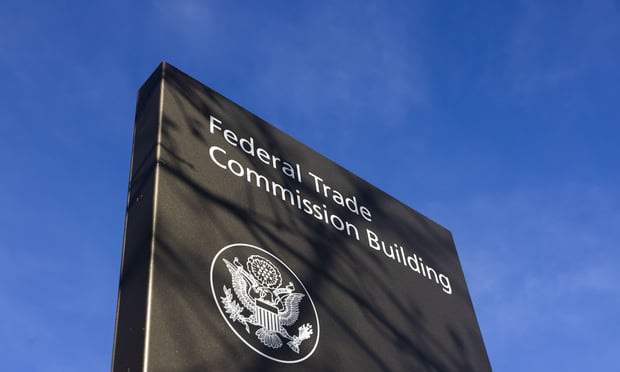
A career in corporate treasury is not for the faint of heart. Following Russia's invasion of Ukraine this week, stock markets around the world are reeling, currencies are fluctuating, commodity prices are soaring, inflation fears are growing, and potential supply-chain ramifications are settling in for what may be a long period of uncertainty. The very real human costs—and consequent market implications—are at the forefront of the world's concerns about Russia's actions.
These circumstances thrust corporate treasurers into the spotlight once again as the CFO's most valuable player. Each geopolitical crisis presents its own unique and unexpected challenges for the treasury team, stretching imaginations and the ability to adapt, and often exacerbating any pre-existing issues within the organization. Still, today's treasury professionals have already faced plenty of geopolitical crises in their careers, and many of the lessons learned from past events are relevant to the war in Ukraine.
How can a treasury team ensure they're covering all bases to mitigate risk in today's rapidly changing environment?
Crisis Management Checklist
Two things matter most in any crisis: speed and accuracy. Addressing a crisis situation too slowly results in increased damage; however, sacrificing accuracy for speed can have equally destructive consequences. Thus, global treasury and finance teams must strike the right balance between speed and accuracy while taking the following steps.
1. Assess the company's current state of liquidity. In the past 48 hours, countless treasurers received an urgent message from their CFO asking for clarity around the company's exposure to Ukraine and Russia. Those who have not yet faced this question probably will soon. They need to immediately:
- Prepare an up-to-the-moment global cash position and a means of updating as frequently as needed.
- Recalculate global short-term forecasts—at the corporate level and perhaps also by entity—with a plan for frequent updates.
- Identify how much money the company currently has in rubles and other currencies with the potential to be destabilized.
- Assess alternatives to holding physical currency in Russia, Ukraine, and other affected countries.
- Verify whether any partner banks are now under sanctions.
- Recalculate counterparty risk for customers, suppliers, financial institutions, and other business partners around the world.
- Review available credit facilities globally.
- Determine how the conflict might affect payroll for any employees in impacted regions.
For treasurers who don't have immediately available answers in any of these areas, now is the time to gather this information.
2. Separate risks into categories of immediate-term, near-term, and long-term. Leveraging the current-state analysis, determine which issues require attention right away. What can wait?
In prioritizing immediate-term risks, consider the potential for:
- Materials shortages. Over the past few decades, many companies have come to rely, for key materials, on suppliers located in both developed and developing markets around the world. As seen on a small scale with chip shortages during the global pandemic, an interruption in the supply of an integral production component can spell big trouble for companies, especially manufacturers. Russia is one of the world's largest suppliers of goods—particularly of natural resources—while Ukraine is a major supplier of wheat and minerals to the world. The Russian invasion poses a significant supply-chain risk for businesses across myriad industries and regions.
- Logistical disruptions. Disruptions to railways, roads, and sea routes in the impacted regions will create delays and capacity constraints as companies look to reroute their goods and materials.
- Currency instability. Escalating exchange rate volatility could increase transactional and operating exposures for the Russian ruble, the Ukrainian hryvnia, and other currencies around the globe. When currencies are devalued, hyperinflation may not be far behind.
With these considerations in mind, recalculate your company's ratio of current debt to current assets, and evaluate the organization's total exposure to the war in Ukraine. If the business requires extensive current borrowing, and particularly if you're in an industry likely to be significantly impacted by the war, you may need to shift to longer-term debt to shore up liquidity in case the lending market tightens.
3. Act to mitigate the risks you've identified as requiring immediate action. After assessing the business's current state and prioritizing risk exposure areas, your treasury team is ready for action. Take steps to:
- Minimize exposure, using your revised near-term forecasts to ensure your organization will have the necessary liquidity in the impacted regions.
- Contact suppliers to discuss new payment terms, leveraging less-volatile currencies and financial institutions located in unsanctioned countries where possible.
- Work cross-functionally, using financial forecasts to identify at-risk suppliers, and arrange for increased stock or alternative suppliers when necessary to ensure business continuity.
- Communicate frequently with banking partners; alert them if you are considering drawing on credit lines, and assess whether any credit lines need to be extended or renewed.
- Address any concerns regarding your organization's credit rating to guard against a downgrade, especially if you're in an industry in which the war in Ukraine has, or is perceived to have, a particularly acute impact to your business.
- Consider any changes in policy or procedure that are required to support these actions.
4. Address near- and long-term risks. Once you have addressed immediate risks, move to tackle near- and longer-term risks. It's important to prioritize these so that your organization can assess the prospective operational and business impacts with a cool head. Combating near- and long-term risk typically requires more of a strategic approach than a tactical plan.
Among other issues, consider the following when working to mitigate longer-term risks:
- Prepare for additional sanctions. The world has responded rapidly to the Russian invasion by imposing sanctions against businesses and individuals, freezing assets, and more. One of the harshest possible sanctions that has not yet been adopted is removal of Russia from the SWIFT network.* Although it's impossible to predict what future sanctions may be put into place, companies can prepare for those that are the most likely to be implemented.
- Eliminate sanctioned banks from your preauthorized wire transfer platforms, including those that you use as intermediary banks to other unsanctioned countries. Failing to do so may result in fines—or worse.
- Review investments tied to floating rates, in order to determine whether a decrease in interest rates would mean funds would be better off in an FDIC-backed or similar account.
- Review debt covenants and credit agreements, in case they are linked to stock price or debt-to-equity ratio.
- Expect and plan for an increase in cybersecurity attacks.
- Change policies and procedures as necessary to accommodate the shifting geopolitical landscape.
5. Establish a plan for ongoing monitoring. Which areas of the business need to be monitored for impacts from the developing situation? How frequently do they need to be monitored—only when additional news breaks or sanctions change, or on a regular basis? When combating a developing crisis, regular monitoring of risk mitigation is typically one of the most important activities a company can undertake.
Leveraging Lessons Learned for Future Resilience
High-pressure situations expose deficient processes and exacerbate known pain points. Geopolitical disruptions take their toll on treasury teams. Still, as Winston Churchill once advised: "Never let a good crisis go to waste." As the war in Ukraine reveals areas in which inadequate information flows are hampering the agility of your treasury and risk management functions, seize the opportunity to propose solutions that would alleviate these issues.
For example, as you work through the treasury checklist above, you may find that building a cash position by cobbling together spreadsheets from bank portals is too cumbersome to be refreshed as regularly as needed during a crisis. And limited visibility into cash balances may be inhibiting your organization's precise and fast decision-making. If the Ukraine-Russia crisis highlights your need for more dynamic and agile cash management practices, that experience may support an upgrade to new treasury technologies that can connect via application programming interface (API) to your company's bank accounts around the world.
Likewise, you may be able to leverage immediate-term concerns that payments may be inadvertently routed through a sanctioned bank to build payment processes that offer end-to-end traceability. Or you might find that muddled forecasting metrics are preventing a clear assessment of the supply-chain risk inherent in doing business with companies located in sanctioned areas.
See also:
- Will Russian Entities Service Foreign Debt?
- Russia Erects Financial Defenses as Sanctions Hit Banks and Markets
- U.S. Pensions Face Demands to Exit Russian Assets
- A $9 Billion Bond Problem Is Coming for Russian Debtors
Despite many negative ramifications, crises can draw attention to the need for improvements in key treasury processes. Modernizing the treasury function now can increase the quality, speed, and precision of treasury operations, improving decisions by reducing the drag of inefficient, manual activities.
Russia's invasion of Ukraine is troublesome for businesses around the world. But treasury professionals should take heart: The storms you have weathered in the past, the tools that support you doing your best work, and the strength of your collective teams mean that the financial health of your organization is in good hands.
And while we react to the Russian invasion and shore up our treasury teams for the instability that war brings, our thoughts remain with the people of Ukraine.
* Editor's note, February 28, 2022: A select number of Russian banks have now been removed from SWIFT.
 Mitch Thomas is the head of corporate advisory at FinLync. After more than 10 years advising top multinationals around the globe, Mitch now lends his expertise to forward-thinking treasury teams looking to advance core treasury processes in cash management, cash forecasting, and payments through FinLync's bank API–powered suite of tools.
Mitch Thomas is the head of corporate advisory at FinLync. After more than 10 years advising top multinationals around the globe, Mitch now lends his expertise to forward-thinking treasury teams looking to advance core treasury processes in cash management, cash forecasting, and payments through FinLync's bank API–powered suite of tools.
© 2024 ALM Global, LLC, All Rights Reserved. Request academic re-use from www.copyright.com. All other uses, submit a request to [email protected]. For more information visit Asset & Logo Licensing.






